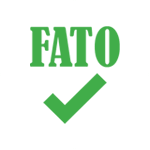
The safety for consumption is one of the greatest benefits of industrialized food
At the food industry, the items related to safety have been integrated to the quality assurance or quality control systems, or even to quality management systems, and these systems can be simultaneously directed the product’s safety and quality.
The integrated application of preventive tools, such as Good Manufacturing Practices (GMP) Standard Sanitizing Operating Procedures (SOP) are prerequisites to implement the Hazard Analysis and Critical Control Points (HACCP) system. This set is intended to ensure the products safety. Risk control means prevention, elimination and reduction of risks at acceptable levels, or preventing them to exceed these levels, and/or risks minimization. The use of these control tools bring objectivity to the systems, allowing to strictly monitor critical points in the processes, that is, those that present higher risk, prioritizing a preventive instead of reactive approach, and reducing the operational costs.
Quality control is a mandatory regulatory activity from which national or local authorities can ensure the availability of suitable food and in compliance with the label requirements, as provided by law.
Check out more data on industrialized food safety:
- Food safety: the biological hazards.
- Food safety: the chemical hazards.
- Food safety: the physical hazards.
- Food quality and safety control systems.
- Chapter 14 Food Safety, the publishing Brasil Ingredients Trends 2020.
- Corporate initiatives to use the Food Safety systems



